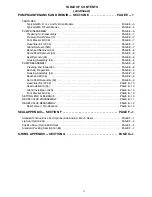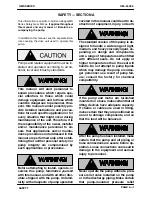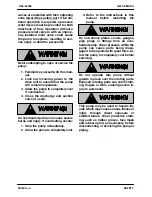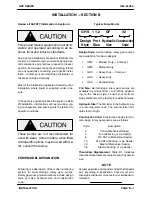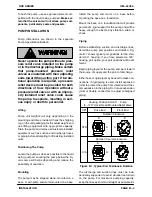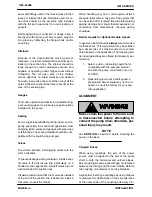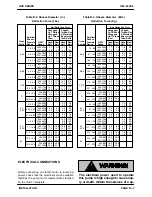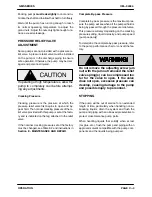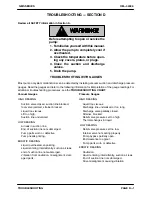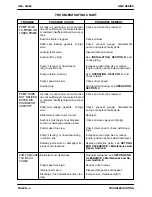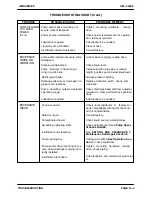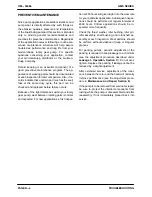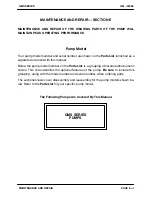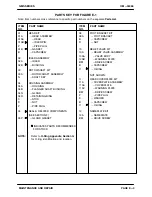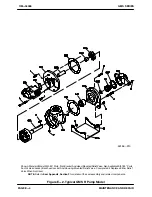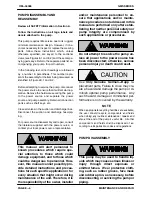
GMS SERIES
OM-04386
PAGE B-6
INSTALLATION
Ideal v‐belt tension is the
lowest
tension at which
the belt will not slip under peak load conditions. Do
not over‐tension v‐belts. Over‐tensioning will short
en both v‐belt and bearing life. Under‐tensioning
will cause belt slippage. Always keep belts free
from dirt, grease, oil and other foreign material
which may cause slippage.
Tension Measurement
Correct v‐belt tension can be achieved using a v‐
belt tension tester and Table B‐2 or B‐3. Use the
tables to find the v‐belt size (cross‐section), the
smallest sheave diameter, the belt type for your ap
plication. The corresponding deflection force re
quired for new or used belts is shown opposite the
RPM range of the pump.
Belt Span
Deflection
Figure B‐5. Belt Tension Measurement
The ratio of deflection to belt span is 1:64 for both
ASA and metric units. Therefore, a belt with a span
of 64 inches would require a deflection of 1 inch at
the force shown on the Tables for your particular
application.
For example, if the span as measured in Figure B‐5
is 32 inches (813 mm), the v‐belt cross‐section is C,
the smallest sheave diameter is 8 inches, the pump
speed is 1250 RPM, and the belts are uncogged
Yy‐T type, then 11.5 lbs. of force on the tensioner
should show 1/2‐inch (12,7 mm) of deflection.
A tension tester is available as an option from Gor
man‐Rupp (P/N 29513-001). Other tension test
ers are available from your local belt/sheave dis
tributor, and work on a similar principal.
To use the Gorman‐Rupp tensioner, measure the
belt span as shown in Figure B‐5. Position the bot
tom of the large O‐ring on the span scale of the ten
sioner at the measured belt span. Set the small O‐
ring on the deflection force scale to zero.
Place the tension tester squarely on the belt at the
center of the belt span. Apply force on the plunger,
perpendicular to the belt span, until the bottom of
the large O‐ring is even with the top of the next belt,
or with the bottom of a straight edge laid across the
sheaves.
Read the force applied from the bottom of the small
O‐ring on the deflection force scale. Compare this
force with the value shown in Table B‐2 or B‐3 and
adjust the tension accordingly. Note that the
ten
sion for
new belts is
higher than that for
used
belts
to allow for expected belt stretching.
Do not
over‐tension used belts to the higher deflection
forces shown for new belts.




